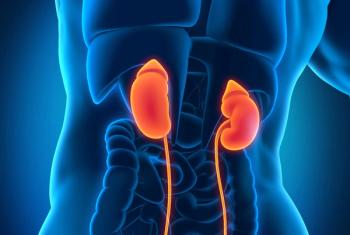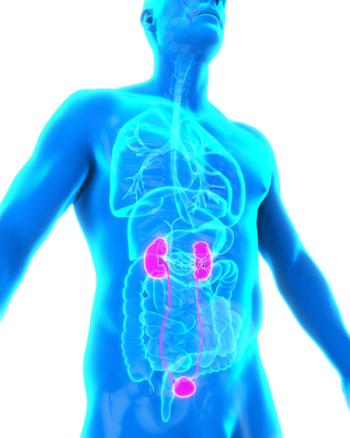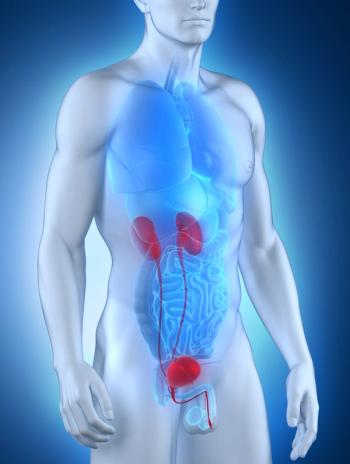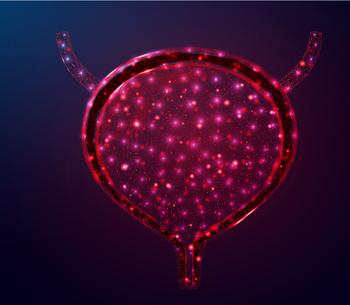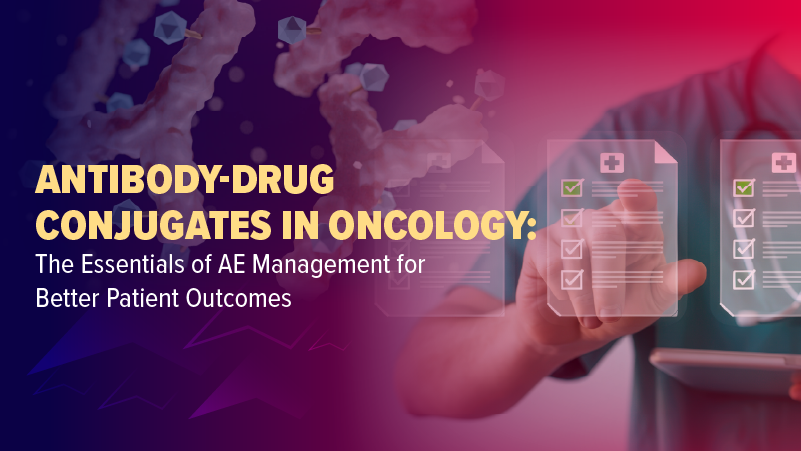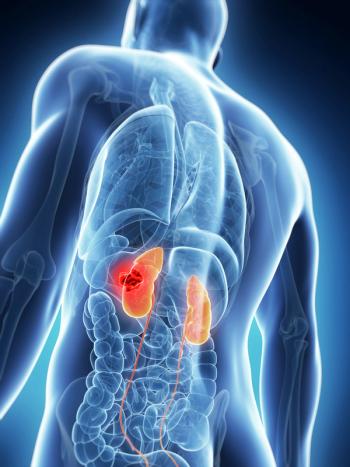
- ONCOLOGY Vol 27 No 5
- Volume 27
- Issue 5
Secondary Hormone Therapy for Castration-Resistant Prostate Cancer
The majority of patients with systemic prostate cancer treated with androgen deprivation therapy (ADT) will develop castration-resistant prostate cancer (CRPC).
The majority of patients with systemic prostate cancer treated with androgen deprivation therapy (ADT) will develop castration-resistant prostate cancer (CRPC). CRPC is defined by prostate-specific antigen (PSA) or radiographic progression in the context of castrate levels of testosterone.[1] CRPC patients may or may not have obvious metastases. Like all stages of prostate cancer, the natural history of nonmetastatic or metastatic CRPC is heterogeneous, and clinical decisions must be made in the context of an individual’s disease pace, symptoms, age, medical condition, and goals.
When a patient initially transitions to CRPC, it’s advisable to confirm that serum testosterone is castrate (< 50 ng/dL by convention). Rarely, the serum testosterone level with medical castration (LHRH agonists/antagonists) may be higher than 50 ng/dL and can be lowered with an adjustment in the dose of the therapeutic agent, proper administration of the agent, or orchiectomy. CRPC can be categorized as nonmetastatic or metastatic. In nonmetastatic CRPC, I generally categorize patients as slow progressors or rapid progressors based on their initial response to ADT and the PSA doubling time (PSAdt). A trial of denosumab (Xgeva) in nonmetastatic CRPC (PSAdt ≤ 10 months) gives us the best estimate of time to development of metastases and overall survival (OS) in these patients.[1] Patients who had nonmetastatic CRPC with short (< 10 months) PSAdt developed metastases in 29 to 33 months and had an OS of about 44 months.[2] Patients with established metastatic CRPC (no prior chemotherapy) have life expectancy in the range of 27 to 32 months and may need more frequent cancer staging and interventions.[3] Patients with nonmetastatic CRPC should be re-imaged at regular intervals (3 to 6 months) in order to be able to take advantage, as early as possible, of the option for therapies that require metastases.
An important aspect of the biology of CRPC is that most CRPCs select mechanisms that upregulate intracellular androgens and/or androgen receptor (AR), leading to ongoing AR-directed cancer growth despite a castrate level of serum androgens.[4] Thus, when patients develop CRPC they are usually sensitive to sequential “secondary” hormonal therapies directed at AR inhibition. In fact, in a retrospective analysis of 436 patients treated with secondary hormonal therapies at our center, we found that the median duration of time on secondary hormone therapies (antiandrogens, ketoconazole, estrogens) was 30 months compared with a median duration of 24 months on primary ADT.[5] Response to initial ADT predicted subsequent response to secondary ADT; patients who responded to primary ADT for > 24 months received secondary ADT for a median of 40 months, whereas the median was 18 months for men who responded to primary ADT for < 24 months. The recent US Food & Drug Administration (FDA) approval based on survival advantages of a more potent antiandrogen (enzalutamide [Xtandi]) and a potent androgen synthesis inhibitor (abiraterone [Zytiga]) has put to bed the previously held notion that prostate cancer doesn’t respond to sequential hormone therapy.[6,7]
Upon development of CRPC, I generally consider anti-androgen therapy as the first “secondary” hormone therapy, and in fact antiandrogens and ketoconazole are the only options for nonmetastatic CRPC based on FDA label and cost. The possible exception to consideration of sequential antiandrogen therapy would be a patient profile such as a very short response to primary ADT and/or a non–PSA-producing tumor that would predict nonresponsiveness to additional ADT. I commonly use bicalutamide and nilutamide and rarely use flutamide due to the inconvenience of thrice-daily dosing and frequent gastrointestinal toxicity. The rate of PSA response to antiandrogen therapy for CRPC is 20% to 30%, and the duration of response generally ranges from 6 to 24 months.[8] Although high-dose bicalutamide (150-200 mg) has been evaluated in this population, bicalutamide is not approved at doses above 50 mg daily, and I generally don’t use bicalutamide at high doses. Patients who have been on an antiandrogen for a period of time long enough to select out a tumor AR mutation may have a response to stopping antiandrogen therapy, referred to as antiandrogen withdrawal response (AAWR).[9] The time needed to select an activating tumor AR mutation is not known, but I generally will evaluate for AAWR if a patient has been on an antiandrogen for longer than a year. Patients may have sequential responses to antiandrogens, particularly if they have longer than average duration of response to previous primary and secondary ADT.[6]
Enzalutamide is considered a second-generation antiandrogen; it is more potent than first-generation antiandrogens because of its ability to block nuclear translocation of AR.[10] Enzalutamide is approved for use in metastatic CRPC post-chemotherapy based on a 5-month survival advantage vs placebo.[7] It is expected that the pre-chemotherapy enzalutamide phase III trial will mature in 2013. It is anticipated that this will be a positive trial, as it clearly makes biologic sense that a potent antiandrogen will be effective in early CRPC. A critical question is that of the utility of prescribing enzalutamide in earlier stages of prostate cancer, such as nonmetastatic CRPC, or even at initiation of first ADT. Clinical trials are underway to evaluate the drug in early-stage prostate cancer. Despite enzalutamide’s potency and favorable toxicity profile, it may not completely replace first-generation antiandrogens, since mechanisms of resistance to one antiandrogen may select for a response to a second or third antiandrogen in a sequential fashion.[11] Additional approaches to AR antagonism, such as agents that inhibit the AR N-terminus, are in development.[12] Future strategies may include combining divergent AR antagonists or dual AR and ligand inhibitors, such as galeterone.[13]
Abiraterone acetate selectively inhibits CYP17 α-hydroxylase and C17,20-lyase, which are enzymes critical for androgen synthesis. Abiraterone acetate was initially approved in 2010 after demonstrating a 4-month survival benefit in docetaxel-refractory metastatic prostate cancer. In 2012 it received an expanded indication for use in the pre-chemotherapy setting after eliciting significant delays in disease progression and a strong trend to increased OS. Abiraterone is relatively easy to use and has fewer side effects than chemotherapy. To prevent possible mineralocorticoid excess from resultant adrenocorticotropic hormone (ACTH) production, the label recommends concomitant use of prednisone at 5 mg twice daily. In the phase III studies, hypokalemia, hypertension, and edema were seen in 17%, 10% to 22%, and 28% to 31% of patients, respectively.[3,6] Ongoing investigations are evaluating abiraterone’s efficacy in earlier disease states (ie, nonmetastatic CRPC) and in combination with other therapeutic agents, as well as assessing the necessity of concurrent administration of corticosteroids or gonadal suppression. Further optimization of its use will require identification of predictive biomarkers for response and resistance.
The pivotal issues in regard to the evolving treatment options for secondary hormone therapies in CRPC include drug costs, the question of what is the most effective sequencing or combination of agents, and elucidation of mechanisms of resistance. Abiraterone and enzalutamide cost approximately $5,500 to $7,500 monthly, which can be prohibitive for patients without prescription drug coverage or with large monthly copays. Some patient assistance programs exist, but the coverage is not enough to address patient needs. For patients who can’t afford abiraterone, ketoconazole can often affect a similar response at a lower cost.[14] When the patient can tolerate the maximal dose, I prescribe ketoconazole at 400 mg three times daily (on an empty stomach) with hydrocortisone at 30 mg AM/10 mg PM, and I often concomitantly use dutasteride to lower intracellular dihydrotestosterone.[14] Additionally, regarding older secondary hormonal options, I rarely use estrogens any longer due to the expanded options discussed above. In certain situations (long sequential hormonal responses, aversion to chemotherapy, low risk for thrombosis), however, estrogens can still be considered, and in these cases I use either Premarin (conjugated estrogen tablets) or estradiol patches.[15]
The key to optimizing secondary hormonal therapy sequencing and combinations is to understand tumor resistance. There are programmatic (Stand Up To Cancer;
Financial Disclosure:Dr. Taplin has served on the advisory boards of and received research funding from Johnson & Johnson, Medivation, Inc, and Tokai Pharmaceuticals.
Key Points in Dr. Taplin’s Approach to Secondary Hormone Therapy for CRPC
• The timing of therapeutic interventions should be tailored to patient metrics of disease aggressiveness, such as duration of response to primary ADT, PSA doubling time, and metastases.
• Most patients will respond to sequential secondary hormone therapy, and the duration of response to prior hormone interventions can predict response to subsequent ADT.
• Important questions remain unanswered, such as what constitutes the most effective sequence orcombination of secondary hormone therapies in CRPC, and what are the mechanisms of resistance to these therapies.
ADT = androgen deprivation therapy; CRPC = castration-resistant prostate cancer; PSA = prostate-specific antigen.
References:
References
1. Scher HI, Halabi S, Tannock I, et al. Design and end points of clinical trials for patients with progressive prostate cancer and castrate levels of testosterone: recommendations of the Prostate Cancer Clinical Trials Working Group. J Clin Oncol. 2008;26:1148-59.
2. Smith MR, Saad F, Coleman R, et al. Denosumab and bone-metastasis-free survival in men with castration-resistant prostate cancer: results of a phase 3, randomized, placebo-controlled trial. Lancet. 2012;379:39-46.
3. Ryan CJ, Smith MR, de Bono JS, et al; COU-AA-302 Investigators. Abiraterone in metastatic prostate cancer without previous chemotherapy. N Engl J Med. 2013;368:138-48.
4. Montgomery RB, Mostaghel EA, Vessella R, et al. Maintenance of intratumoral androgens in metastatic prostate cancer: a mechanism for castration-resistant tumor growth. Cancer Res. 2008;68:4447-54.
5. Nakabayaski M, Werner L, Oh WK, et al. Secondary hormonal therapy in men with castration-resistant prostate cancer. 2011;9:95-103.
6. de Bono JS, Logothetis CJ, Molina A, et al; COU-AA-301 Investigators. Abiraterone and increased survival in metastatic prostate cancer. N Engl J Med. 2011;364:1995-2005.
7. Scher HI, Fizazi K, Saad F, et al; AFFIRM Investigators. Increased survival with enzalutamide in prostate cancer after chemotherapy. N Engl J Med. 2012;367:1187-97.
8. Joyce R, Fenton MA, Rode P, et al. High dose bicalutamide for androgen independent prostate cancer: effect of prior hormonal therapy. Clin Cancer Res. 1997;3:1383-8.
9. Taplin ME, Rajeshkumar B, Halabi S, et al. Androgen receptor mutations in androgen-independent prostate cancer: Cancer and Leukemia Group B Study 9663. J Clin Oncol. 2003;21:2673-8.
10. Tran C, Ouk S, Clegg NJ, et al. Development of a second-generation antiandrogen for treatment of advanced prostate cancer. Science. 2009;324:787-90.
11. Balbas MD, Evans MJ, Hosfield DJ, et al. Overcoming mutation-based resistance to antiandrogens with rational drug design. Elife. 2013;2:e00499.
12. Sadar MD. Advances in small molecule inhibitors of androgen receptor for the treatment of advanced prostate cancer. World J Urol. 2012;30:311-8
13. Bruno RD, Vasaitis TS, Gediya LK, et al. Synthesis and biological evaluations of putative metabolically stable analogs of VN/124-1 (TOK-001): head to head anti-tumor efficacy evaluation of VN/124-1 (TOK-001) and abiraterone in LAPC-4 human prostate cancer xenograft model. Steroids. 2011;76:1268-79.
14. Taplin ME, Regan MM, Ko YJ, et al. Phase II study of androgen synthesis inhibition with ketoconazole, hydrocortisone, and dutasteride in asymptomatic castration-resistant prostate cancer. Clin Cancer Res. 2009;15:7099-105.
15. Pomerantz M, Manola J, Taplin ME, et al. Phase II study of low dose and high dose conjugated estrogen for androgen independent prostate cancer. J Urol. 2007;177:2146-50.
Articles in this issue
over 12 years ago
Introducing Three New Featuresover 12 years ago
How the Sequester Cuts Are Harming Oncologyover 12 years ago
The Past, Present, and Future of Melanoma Therapyover 12 years ago
Lessons From Considering the Cancer Landscapeover 12 years ago
Adapting to the Brave New World of Lung Cancer Treatmentover 12 years ago
Don't Tell Me Anything Negativeover 12 years ago
Rising PSA Level in a 46-Year-Old ManNewsletter
Stay up to date on recent advances in the multidisciplinary approach to cancer.


